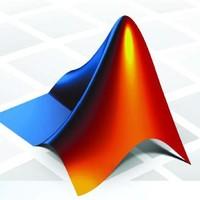In this work, a recently developed fracture modeling method called localizing gradient damage method (LGDM) is implemented in MATLAB. MATLAB is well-known in the computational research community for its simple and easy-to-learn coding interface. As a result, MATLAB is generally preferred for the initial development (prototyping) of computational models by researchers. However, MATLAB-developed codes are seldom used for large-scale simulations (after initial development is complete) due to their computational inefficiency. Hence, a computationally efficient implementation of LGDM using MATLAB vectorization is presented in this work. The choice of LGDM (as the fracture modeling method) is based on its thermodynamically consistent formulation built upon the micromorphic framework. Moreover, the non-linear coupled field formulation of LGDM makes it suitable for testing the computational efficiency of vectorized MATLAB implementation in a non-linear finite element setting. It is shown in this work that the vectorized MATLAB implementation can save significant computational resources and time as compared to non-vectorized implementations (that are parallelized with MATLAB parfor). The vectorized MATLAB implementation is tested by solving numerical problems in 1D, 2D and 3D on a consumer-grade PC, demonstrating the capability of vectorized implementation to run simulations efficiently on systems with limited resources. The sample source codes are provided as supplementary materials that would be helpful to researchers working on similar coupled field models.
翻译:在这项工作中,在MATLAB中采用了一种最近开发的骨折模型方法,称为梯度损坏本地化法(LGDM),在MATLAB中采用。MATLAB在其计算研究界中因其简单易解的编码界面而广为人知。结果,MATLAB通常倾向于由研究人员初步开发计算模型(protytype),然而,MATLAB开发的代码由于计算效率不高,很少用于大规模模拟(在初始开发完成后),因此,由于计算效率不高,因此,在计算工作中介绍了使用MATLAB矢量化的计算高效实施LGDMGD。LDMD的选择(作为断裂模型方法)基于基于微观形态框架的热动力一致的配方。此外,LGDMDM的无线连接场设计使在非线性参数设置中测试矢量化 MATLAB执行的计算效率。在这项工作中,矢量化 MATLBB的实施工作可以节省重要的计算资源,而成本的计算法则以2AAT-ML执行能力作为非亚化的测试。



